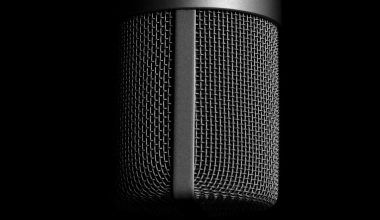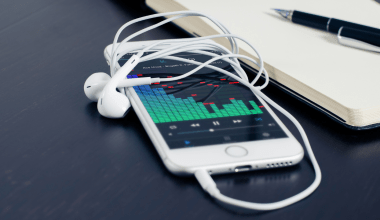Have you ever wondered how you can produce music at home? If so, you’re not alone. With modern technology, making music has never been more accessible. Whether you dream of becoming the next big music producer or simply want to create tracks for fun, this guide will walk you through the entire process in simple steps.
Why Produce Music at Home?
Producing music at home offers endless possibilities. You can:
- Experiment with your sound without any pressure.
- Save money compared to renting a professional studio.
- Work on your craft at your own pace.
The best part? You don’t need a massive budget or an advanced setup to get started. With a few essential tools and some dedication, you can create music that sounds professional.
Essential Tools for Producing Music at Home
Before diving into the creative process, let’s talk about the equipment you’ll need to produce music at home. Don’t worry—it’s not as intimidating as it sounds!
1. A Reliable Computer
Your computer is the heart of your home studio. Most modern laptops and desktops are powerful enough for music production. However, if you plan to work on complex projects, invest in a computer with:
- A fast processor (e.g., Intel i5 or higher).
- At least 8GB of RAM.
- Sufficient storage space (SSD is preferable).
2. Digital Audio Workstation (DAW)
A DAW is the software you’ll use to record, edit, and mix your music. Popular options include:
- Ableton Live: Great for electronic music and live performances.
- FL Studio: Beginner-friendly with a wide range of features.
- Logic Pro: Ideal for Mac users.
- GarageBand: A free option for Mac users to get started.
Choose a DAW that feels intuitive to you. Many offer free trials, so you can experiment before committing.
3. Audio Interface
An audio interface connects your instruments and microphones to your computer. It improves sound quality and reduces latency. Affordable options include the Focusrite Scarlett series and PreSonus AudioBox.
4. Microphone
If you plan to record vocals or acoustic instruments, a good microphone is essential. For beginners, a condenser microphone like the Audio-Technica AT2020 works well.
5. Headphones and Monitors
High-quality headphones and studio monitors (speakers) help you hear every detail of your music. Brands like Audio-Technica and KRK offer reliable options for beginners.
6. MIDI Controller
A MIDI controller, like a keyboard, makes it easier to play and record virtual instruments. It’s not essential, but it’s a handy tool for experimenting with melodies.
7. Soundproofing
Good soundproofing minimizes unwanted noise. You don’t need to invest in expensive panels; simple DIY solutions like foam pads or heavy curtains can make a big difference.
Setting Up Your Home Studio
Now that you have your tools, it’s time to set up your workspace. Here are some tips to create a productive environment:
- Choose a Quiet Space: Select a room with minimal outside noise.
- Organize Your Gear: Keep your equipment within easy reach to streamline your workflow.
- Ensure Proper Lighting: Natural light is ideal, but any well-lit space works.
- Test Acoustics: Play some music to identify any echoes or uneven sound distribution.
Learning the Basics of Music Production
Producing music at home might feel overwhelming at first, but breaking it down into manageable steps helps. Here’s how to get started:
1. Understand Music Theory Basics
You don’t need to be a music theory expert, but knowing the fundamentals helps. Focus on:
- Chords and scales.
- Rhythm and timing.
- Song structure (e.g., verse, chorus, bridge).
2. Explore Your DAW
Spend time learning your DAW’s features. Many DAWs have built-in tutorials or online resources to guide you.
3. Experiment with Loops and Samples
Loops and samples are pre-recorded sounds you can use in your tracks. They’re great for experimenting and getting a feel for music production. Websites like Splice and Looperman offer free and paid options.
4. Record Your First Track
Start with a simple project. For example, record a basic melody, add some drums, and layer other instruments. Don’t aim for perfection—focus on learning.
Advanced Tips to Take Your Music to the Next Level
Once you’re comfortable with the basics, try these tips to improve your skills:
1. Learn Sound Design
Sound design involves creating unique sounds using virtual instruments or synthesizers. It’s an exciting way to develop your signature style.
2. Practice Mixing and Mastering
Mixing ensures all elements of your track sound balanced, while mastering polishes the final product. These skills take time to learn, but there are plenty of online tutorials to help.
3. Collaborate with Others
Working with other musicians or producers can spark new ideas and improve your skills. You can collaborate online or in person.
4. Share Your Music
Don’t be afraid to share your creations. Platforms like SoundCloud, Bandcamp, and YouTube are great for reaching an audience.
Staying Motivated as a Home Music Producer
Producing music at home can be challenging, especially when you hit creative blocks. Here’s how to stay inspired:
- Set achievable goals for each session.
- Take breaks when you feel stuck.
- Listen to a wide range of music for inspiration.
- Join online communities for support and feedback.
Final Thoughts
Producing music at home is an incredibly rewarding journey. By investing in the right tools, learning the basics, and practicing regularly, you can turn your musical ideas into reality. Remember, every expert was once a beginner.
Related Articles:
For further reading, explore these related articles:
- Cómo Subir Mi Música a Spotify: Guía Completa para Artistas Independientes
- How to Upload Audio to Spotify: A Beginner’s Guide
For additional resources on music marketing and distribution, visit DMT Records Private Limited.






